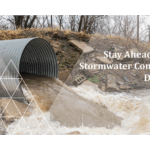
DeSoto Phase 1 Environmental Site Assessments play a vital role in safeguarding the environment and promoting sustainable development. These assessments are designed to systematically evaluate the potential environmental risks associated with a particular site. By identifying and addressing these risks early on, Phase 1 assessments help to prevent or mitigate adverse impacts on the environment and human health.
Understanding the Importance of Phase 1 Environmental Site Assessments
Phase 1 Environmental Site Assessments are essential tools for understanding the environmental conditions of a site before any development or redevelopment activities take place. These assessments provide valuable insights into potential sources of contamination, environmental liabilities, and regulatory compliance issues that may be present on the site. By conducting a Phase 1 assessment, developers, investors, and property owners can make informed decisions and minimize the risks associated with environmental contamination.
The Role of Phase 1 Assessments in Environmental Protection
Phase 1 Environmental Site Assessments serve as a crucial first step in protecting the environment and preventing pollution. By evaluating the historical and current uses of a site, these assessments identify areas of concern and prioritize actions to remediate any potential contamination. This proactive approach ensures that development occurs in a manner that is environmentally responsible and sustainable.
Key Components of a Phase 1 Assessment
A thorough Phase 1 Environmental Site Assessment typically consists of several key components. These include a comprehensive review of historical records, interviews with current and past property owners, an on-site inspection, and a detailed report summarizing the findings. This multidisciplinary approach allows for a comprehensive evaluation of potential environmental risks and helps stakeholders make informed decisions about the site’s future.
The Process of Conducting a DeSoto Phase 1 Environmental Site Assessment
The process of conducting a Phase 1 Environmental Site Assessment involves several distinct stages. These stages ensure that all relevant information is gathered, analyzed, and documented in a comprehensive manner.
Preliminary Site Investigation
The preliminary site investigation involves conducting a thorough review of historical records, including property ownership history, previous land uses, and any known environmental incidents. This investigation provides valuable context and helps identify potential areas of concern that may warrant further investigation.
Data Collection and Analysis
Data collection is a critical step in Phase 1 assessments. It involves collecting data on current site conditions, including soil and water samples, as well as conducting interviews with current and past property owners to gather information about potential activities that may have impacted the site. This data is then analyzed and compared to relevant environmental regulations and guidelines.
Reporting and Recommendations
Following the data collection and analysis phase, a comprehensive report is prepared summarizing the findings of the Phase 1 assessment. This report includes an evaluation of potential environmental risks, recommendations for further investigation or remediation, and an assessment of the site’s compliance with applicable environmental regulations. This report serves as a valuable resource for stakeholders, allowing them to make informed decisions regarding the site’s future.
Regulatory Framework for DeSoto Phase 1 Environmental Site Assessments
Phase 1 Environmental Site Assessments are conducted in accordance with a robust regulatory framework that ensures consistency and accountability. These assessments are guided by both federal and state environmental laws, which outline the mandatory procedures and standards for conducting assessments and addressing potential environmental risks.
Federal and State Environmental Laws
At the federal level, Phase 1 Environmental Site Assessments are governed by the Comprehensive Environmental Response, Compensation, and Liability Act (CERCLA) and the Resource Conservation and Recovery Act (RCRA). These laws provide the legal framework for identifying and addressing potential environmental contaminants and promoting the cleanup of contaminated sites.
Compliance and Enforcement
Compliance with environmental laws and regulations is crucial for the successful execution of Phase 1 Environmental Site Assessments. Regulatory agencies play a vital role in monitoring compliance and enforcing the laws to ensure the protection of the environment. Non-compliance can result in severe penalties and legal consequences, making it imperative for all parties involved to adhere to regulations and guidelines.
Potential Challenges and Solutions in DeSoto Phase 1 Environmental Site Assessments
Conducting Phase 1 Environmental Site Assessments can be complex, and there are several challenges that may arise during the process. However, with careful planning and the right approach, these challenges can be effectively managed and overcome.
Dealing with Incomplete or Inaccurate Data
In some cases, obtaining complete and accurate data for a Phase 1 assessment can be challenging. Historical records may be incomplete or difficult to access, and site-specific information may be limited. To address this challenge, experienced environmental professionals employ various investigative techniques and consult multiple sources to gather as much relevant data as possible. By combining different sources and employing sound professional judgment, they can fill in any gaps and ensure a comprehensive assessment.
Addressing Site Access Limitations
Sometimes, access to a site may be limited, making it challenging to gather necessary data and conduct a thorough assessment. This may occur for various reasons, such as restricted entry due to safety concerns or ongoing operations on the site. In such instances, environmental professionals work closely with site owners and regulators to develop alternative strategies and sampling plans that allow for a comprehensive assessment within the limitations imposed by site access restrictions.
Mitigating Risks and Uncertainties
Phase 1 assessments inevitably involve a degree of uncertainty and associated risks. However, experienced environmental professionals employ various risk mitigation strategies to minimize uncertainties and provide stakeholders with a clear understanding of the potential environmental risks. These strategies may include additional testing, investigation, or consultation with subject matter experts to gain a more accurate understanding of site conditions and associated risks.
The Future of DeSoto Phase 1 Environmental Site Assessments
The field of Phase 1 Environmental Site Assessments is constantly evolving, driven by advancements in technology and evolving environmental policies. These changes have a significant impact on how assessments are conducted and the outcomes they deliver.
Technological Advancements and Their Impact
Technological advancements, such as remote sensing technologies and advanced data analysis tools, are transforming the way Phase 1 assessments are conducted. These technologies enable environmental professionals to gather data more efficiently, analyze it more accurately, and identify potential environmental risks with greater precision. As these technologies continue to evolve, Phase 1 assessments are becoming even more reliable and effective in identifying and managing environmental risks.
Evolving Environmental Policies and Their Implications
As environmental policies evolve, so do the requirements and expectations for Phase 1 Environmental Site Assessments. Regulatory agencies are increasingly focusing on sustainability and long-term environmental stewardship, driving the need for more comprehensive and robust assessments. Environmental professionals must stay abreast of these policy changes and adapt their methodologies and approaches to ensure compliance and deliver assessments that align with the evolving regulatory landscape.
In conclusion, DeSoto Phase 1 Environmental Site Assessments are crucial for understanding and managing potential environmental risks associated with a site. These assessments provide a comprehensive evaluation of historical and current site conditions, helping to prevent or mitigate adverse environmental impacts. With a regulatory framework in place and advancements in technology, Phase 1 assessments are poised to become even more effective and reliable in promoting environmental protection and sustainable development.
As you consider the critical role of DeSoto Phase 1 Environmental Site Assessments in ensuring sustainable development and environmental protection, remember that expert guidance is paramount. ESE Partners is dedicated to responsibly moving your business forward with comprehensive environmental solutions. Our team of skilled environmental engineers and scientists is equipped to support your needs in assessment, remediation, and compliance. With offices across Texas, we’re ready to provide the innovative and sustainable approaches necessary to navigate the complexities of environmental challenges. Don’t let potential environmental risks derail your projects. Request A Proposal today and partner with ESE Partners for quality-driven results that benefit your business and the community.








